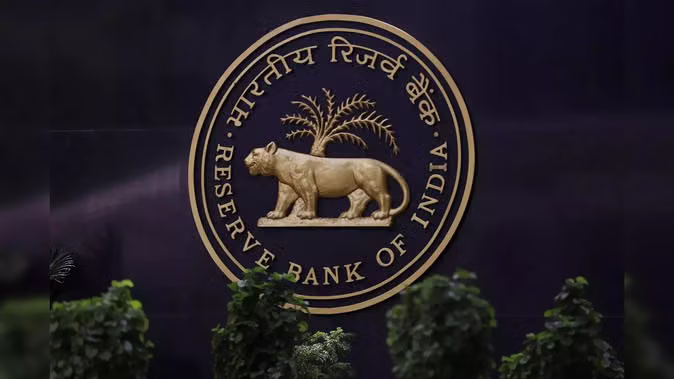RBI Proposes Risk-Based Deposit Insurance: The Reserve Bank of India (RBI) has unveiled a series of regulatory reforms aimed at strengthening the banking sector, incentivising sound risk management, and providing greater lending flexibility. In a major announcement on October 1, 2025, RBI Governor Sanjay Malhotra outlined plans to introduce risk-based deposit insurance premiums alongside key reforms in lending regulations. These measures are designed to reduce costs for well-rated banks, expand credit opportunities, and ensure robust financial stability while safeguarding depositors’ interests.
Governor Malhotra emphasized that the proposed reforms would reward banks with strong credit ratings by lowering their deposit insurance premiums. This approach aims to encourage prudent risk management practices and ensure that banks maintain high standards of operational and financial discipline. The RBI believes that linking insurance costs to a bank’s creditworthiness will create a positive incentive structure, promoting resilience in the financial system and strengthening depositor confidence.
In addition to deposit insurance reforms, the RBI announced comprehensive changes to lending regulations to broaden banks’ credit avenues. The central bank’s measures include removing the ceiling on lending against listed debt securities, raising limits for lending against shares from ₹20 lakh to ₹1 crore per person, and increasing IPO financing limits from ₹10 lakh to ₹25 lakh per person. These reforms aim to enhance banks’ flexibility in lending while maintaining responsible risk management standards.
RBI Risk-Based Deposit Insurance Premium Proposal
What Are Risk-Based Premiums?
Risk-based deposit insurance premiums are fees that banks pay to deposit insurance schemes, calculated based on their credit ratings and risk profiles. Banks with higher credit ratings and lower risk profiles will benefit from lower premiums, while higher-risk banks may pay more. This system encourages banks to maintain prudent lending practices and strong governance standards.
Lending Reforms: Expanding Credit Opportunities
The RBI has proposed several regulatory changes aimed at broadening lending opportunities for banks:
Key Reforms
- Removal of Ceiling on Lending Against Listed Debt Securities: Banks can now provide loans without a cap against such securities, increasing their lending flexibility.
- Increase in Lending Limits Against Shares: Limits per person have risen from ₹20 lakh to ₹1 crore, allowing banks to support higher-value credit requirements.
- Higher IPO Financing Limits: Financing for individuals participating in initial public offerings has increased from ₹10 lakh to ₹25 lakh, promoting equity market participation.
These reforms aim to encourage responsible lending while providing banks with greater operational flexibility to meet the credit needs of businesses and individual borrowers.
Read about: ₹40 Crore Insurance Fraud: UP Man Arrested for Allegedly Killing Father, Mother, and Wife to Claim Policies
Monetary Policy Update: Repo Rate Unchanged
Alongside these regulatory reforms, the RBI kept the repo rate unchanged at 5.5% for the second consecutive monetary policy review. This decision reflects the central bank’s cautious stance amid easing retail inflation, global financial volatility, and recent fiscal measures such as GST rationalization.
Implications for Borrowers
- Existing Borrowers: No immediate change in EMIs for home loans or other credit.
- New Borrowers: Expect stable interest rates for housing loans, personal loans, and other credit products.
Analysts have noted that this neutral stance allows room for potential rate cuts in the coming months, possibly starting from December 2025, depending on inflation trends and global economic conditions.

Expert Insights
Piyush Baranwal, Senior Fund Manager at WhiteOak Capital MF, commented on the RBI’s approach:
“The MPC decision to hold rates with a neutral stance reflects subtle shifts in policy, accounting for lower inflation and global growth risks. This stance leaves room for one or two rate cuts in the near term, potentially starting from December.”
These measures collectively demonstrate the RBI’s commitment to maintaining monetary stability, promoting responsible lending, and supporting economic growth in a challenging global environment.
Conclusion
The RBI’s announcement of risk-based deposit insurance premiums marks a significant step toward incentivizing sound banking practices and reducing costs for well-managed banks. By linking premiums to creditworthiness, the central bank aims to promote prudent financial behavior while ensuring depositors’ funds remain protected.
At the same time, lending reforms such as the removal of ceilings on loans against listed debt securities, higher limits for share-based lending, and expanded IPO financing provide banks with greater flexibility to meet credit demand across sectors. These changes are expected to enhance financial inclusion, facilitate market participation, and strengthen the overall banking ecosystem.
Holding the repo rate steady at 5.5% demonstrates the RBI’s careful approach to balancing growth and inflation management, reassuring borrowers and investors alike about the stability of the monetary environment. With these combined measures, India’s banking sector is better positioned to manage risks, support economic growth, and safeguard depositor interests.
Ultimately, the RBI’s dual focus on insurance reform and credit expansion underscores its proactive strategy to ensure a robust, resilient, and growth-oriented financial system, benefiting both banks and their customers.
Also read: Citroen C5 Aircross 2025 Review: A Comfort-Focused, Quirky and Family-Friendly SUV
FAQs
1. What are risk-based deposit insurance premiums?
Risk-based deposit insurance premiums are fees charged to banks based on their credit ratings and risk levels. Banks with higher ratings pay lower premiums, while those with higher risk profiles pay more. This system incentivizes prudent risk management and ensures the sustainability of the deposit insurance fund.
2. How will the proposed reforms benefit banks?
The reforms lower costs for well-rated banks, expand lending flexibility, and encourage responsible credit practices. By raising limits on lending against shares and IPO financing, banks can serve a broader range of customers while maintaining effective risk management.
3. What lending limits have been revised by the RBI?
- Lending against shares per person increased from ₹20 lakh to ₹1 crore.
- IPO financing limits per person raised from ₹10 lakh to ₹25 lakh.
- The ceiling on lending against listed debt securities has been removed, giving banks more operational flexibility.
4. Will borrowers be affected by the unchanged repo rate?
Existing borrowers will not see changes in EMIs, while new borrowers can expect stable interest rates for home loans, personal loans, and other credit products. The RBI’s neutral stance ensures monetary stability while maintaining credit flow to the economy.
5. Could there be future rate cuts?
Analysts indicate that the RBI may consider one or two rate cuts in the coming months, potentially starting in December 2025, depending on inflation trends, global economic conditions, and fiscal policy impacts. This would further support credit growth and economic expansion.






